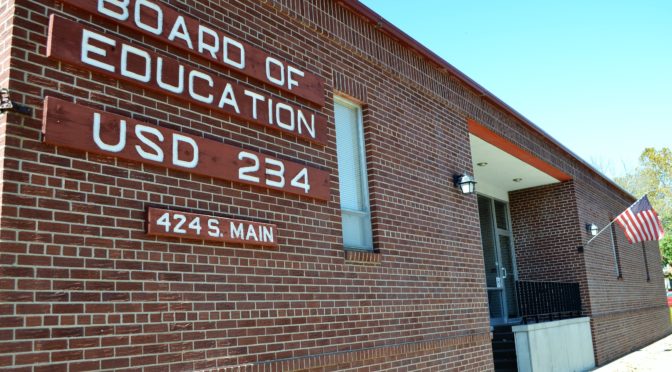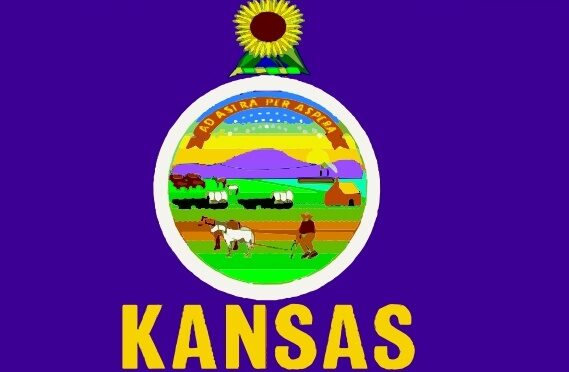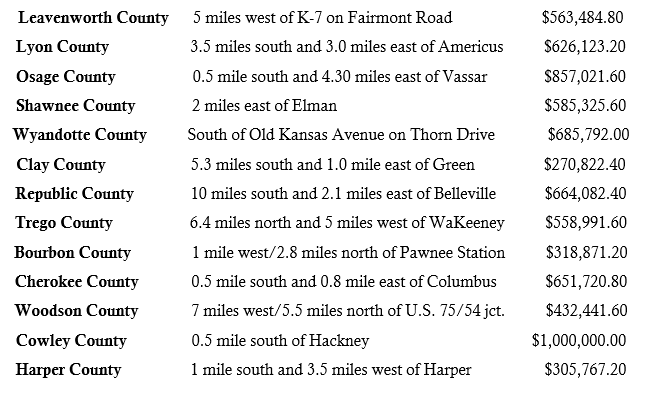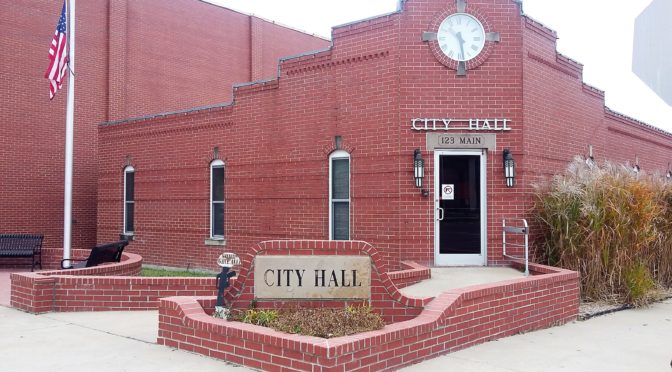September 7, 2021 Tuesday 9:00 am
The Bourbon County Commission met in open session with all three Commissioners and the County Clerk present.
Susan Bancroft and Rob Harrington were also present.
The RNR hearing and the CBDG hearing was open to the public and the rest of the meeting was closed to the public due to COVID precautions, but broadcast on YouTube.
Clifton made a motion to approve the previous meetings minutes, Jim seconded and all approved.
RNR hearing: the RNR hearing was published, Lynne made a motion to open the RNR hearing, Clifton seconded and all approved. Public Comment: Michael Hoyt presented the following, “Revenue Neutral Rate (RNR) hearings to increase property taxes are going on now! KPI has posted a list of hearings scheduled in counties across the state: http://www.kansasopengov.orp/kog/databank#report id=90 KIS
(Keep it Simple); if the governing body votes to go above the Revenue Neutral Rate (RNR), they have the option to increase the amount of money collected in property taxes from the previous year. If they do NOT vote to go above the RNR, they cannot collect one penny more than the previous year in property taxes.
The mil levy may decrease, but if the governing body votes to go above the RNR – then they have the option to collect more money in property taxes. That is what matters to most Kansans – will you be paying more money in property taxes.
Transparency in government has been and should be a top priority. After hearing from Kansans on our complex property tax system, I led an effort to find solutions for Kansas. As a result, last session, legislation was passed to eliminate automatic property tax increases as a result of the valuation of property increasing. Senate Bill (SB) 13 requires local governments, including schools, to provide notice and vote at a publicized hearing before they can collect more money in property taxes than they did the prior year.
The governing body cannot tax in excess of the Revenue Neutral Rate (RNR) without public notices (next year these notices will be letters mailed to property owners) and a RNR hearing held between August 20 and September 20. At the hearing there will be time for public comments and the governing body to vote on a resolution or ordinance that approves the body to collect more in property taxes than the previous year. Taxpayer funded lobbyist and some government officials testified that this legislation wasn’t needed because they are transparent. That is apparently not the case. I’ve been listening to constituents complain about the lack of transparency on the meeting notices and proposed increases. Last week, a county commissioner told county employees to show up to the RNR hearing, but didn’t mention it to others. Only one Commissioner in that County voted No on an 8% increase, the rest voted Yes. Ouch!
Some officials are voting YES on the resolution/ordinance to go above the RNR, but saying they didn’t increase property taxes because they lowered the mil levy. When they vote to go above the RNR and collect more money than the previous year-that is a tax increase! Taxation with representation – let your voice be heard.”
Clifton compared the 2021 budget to the 2022 budget and said the 2022 budget is $44,000 less than last years. Michael Hoyt said the RNR is a shell game being played in the state of Kansas and said this is a tax increase; he said the purpose of SB 13 was to freeze the rate. Clifton said anyone concerned with SB13 should call the Senators and House of Representatives since they voted for this. Susan said that the County needs $7,127,242 in ad valorem taxes to operate and said because the assessed valuation went up, they are able to capture more money. Jim made a motion to close the public hearing, Clifton seconded and all approved. Clifton made a motion to adopt Resolution 26-21 and to give Chairman Oharah permission to sign this resolution, Jim seconded and all approved and Lynne signed the resolution.
Clifton made a motion to open the public hearing for the CDBG Rural Water District, Jim seconded and all approved. Amber Dean with SEKRPC was present for the hearing as well as Michael Hoyt. Jim questioned the County’s financial responsibility in this grant, Amber said this all falls on the Rural Water District. She said the County or City has to apply for the grant on behalf of the Rural Water District; she said this is a $1.5 million project (to install water lines) and said they were applying for a $700,000 grant. Susan Bancroft said the insurance company or legal counsel might have to litigate if there are any problems in the field on the project. Amber stated that Rural Water is responsible for all finances of this project and said any change orders have to be approved by the County. Mark Pohlmier (by telephone) stated that they want to replace the water lines on Maple Road that are 60 years old. Mark said an outside contractor (that is insured and bonded) will install the lines. Mark said this is a $1.5 million project that they will pay ½ of and said they were aware that any change orders would cost them more money. Clifton made a motion to suspend the CDBG public hearing for approximately 45 minutes until legal counsel looks at the contract, Jim seconded and all approved.
Public Works Eric Bailey: Eric said the northern and the northwestern part of the County received 6” of rain this past weekend, so they are hauling rock to that part of the County.
Crack sealing machine: Eric said a new machine cost $50-$55,000 or they can rent a machine for $500/day + materials are approximately $1,300/pallet. Eric said they may be able to share the City’s machine. Jim said Liberty Bell Road and Locust Road needs some crack sealing done.
KDOT Safety grant: Eric said they applied for this grant in April and Bourbon County was chosen to receive the grant. He said they will do a safety plan on the 257 miles of collector roads and the 16 other miles. Bourbon County’s share of this plan will be $5,265. Eric said Justin Meeks had reviewed the contract. Jim made a motion to approve Eric working with KDOT on the safety road grant and our portion being $5,265, Clifton seconded and all approved and signed the document.
Windmills: Eric said there are three up in Bourbon County.
Clifton made a motion to amend the agenda to move the discussion about CIC until after Susan talks and move the County Counselor after Susan as well, Jim seconded and all approved.
Susan reported that the Rural Water District for Allen/Neosho/Bourbon County requested $18,251 in ARPA funds for meters, she said Shane Walker requested $26,000 in ARPA funds to upgrade the EMS software (computers used for maps and reporting). SEK Mental Health requested $212,500 in ARPA funds (Susan said she hasn’t asked if this money will stay in Bourbon County). Clifton suggested waiting to decide on the EMS request.
Clifton made a motion to amend the agenda for an executive session, Jim seconded and all approved. Clifton made a motion to go into a 7-minute executive session for KSA 75-4319(b)(4) to discuss data relating to financial affairs or trade secrets of corporations, partnerships, trusts and individual proprietorships, the Commissioners will meet in another location and reconvene in the Commission room at 10:18, Jim seconded and all approved, (the session included the Commissioners, Rob Harrington and Susan Bancroft). Clifton made a motion to resume with no action, Jim seconded and all approved.
CIC annual contract: Susan said she and Shane had a conversation with CIC and CIC dropped the ball on issues. She said they are trying to resolve issues, but said she didn’t think the work order portion would work for Bourbon County and said they are looking at a different software company for this. Susan suggested waiting until the issues are resolved before signing. This will be discussed again next week.
Jim made a motion to move forward with the $18,251 of ARPA funding for the Allen/Neosho/Bourbon County Rural Water District for new water lines, Clifton seconded and all approved.
Clifton made a motion to amend the agenda to move the County Counselor portion of the meeting until after the Commissioner Comment, Jim seconded and all approved.
Commissioner Comment: Jim made a motion to amend the agenda for an executive session, Clifton seconded and all approved.
Justin Meeks arrived at the Commission meeting.
Jim made a motion to have a 10-minute executive session for KSA 75-4319(b) (1) to discuss personnel matters of individual non-elected personnel to protect their privacy to discuss job performance, the Commissioners will meet in another location and reconvene in the Commission room at 10:34, Clifton seconded and all approved, (the session included the Commissioners, Susan Bancroft, Justin Meeks and Ashely Shelton). At 10:34, Clifton made a motion to resume the meeting with no action, Lynne seconded and all approved.
Lynne made a motion to suspend the Commissioner comment and resume the CDBG grant hearing, Clifton seconded and all approved. Justin said he had reviewed the CDBG grant before and felt it was good to go. Clifton made a motion to adopt Resolution 27-21, Jim seconded and all approved. Clifton made a motion to accept Resolution 28-21 and that Lynne be able to sign the CDBG documents, Jim seconded and all approved. Clifton made a motion to close the CDBG public hearing, Jim seconded and all approved.
Commissioner Comment: Lynne said he had been the “keeper” of the KMDO radio spot, but said he wanted to make a motion to assign this duty to Susan Bancroft, Jim seconded the motion, Clifton asked that Susan reach out to the other agencies or public officials
we support to see if they want to participate in the radio spot as well, all approved the motion.
Justin Meeks apologized for being late, but said he had to be in Linn County this morning. Justin said he received a call from legal counsel from a person representing a sewer issue outside the City of Redfield. He said the County has done some sewer variances before and said they are looking at a parcel that could have an easement for lateral lines, he said he is still reviewing this.
Justin said he may have the Lake Sewer District agreement next week. He said the 1st tax sale will be October 7th.
Clifton made a motion to allow the three Commissioners to attend the Republican party meeting on September 9th when a new County Clerk will be appointed, Jim seconded and all approved.
Justin briefly mentioned the shared services for the HR director between the City and County, (25 hours at the City and 15 hours at the County). Jim made a motion to allow Chairman Oharah to sign for a shared services for HR director at 15 hours/week for the County beginning January 1, 2022, Clifton seconded and all approved.
Clifton made a motion to allow Chairman Oharah to meet with Justin and whoever else is needed regarding the sewer district agreement, Jim seconded and all approved.
Clifton made a motion to go into a 7-minute executive session for KSA 75-4319(b) (1) to discuss personnel matters of individual non-elected personnel to protect their privacy to discuss job performance and job function, the Commissioners will meet in another location and reconvene in the Commission room at 11:06, Jim seconded and all approved, (the session included the Commissioners, Eric Bailey and Justin Meeks). At 11:06, Clifton made a motion to resume the normal session with no action, Jim seconded and all approved.
Clifton made a motion to amend the agenda to allow Eric Bailey to discuss equipment, Jim seconded and all approved. Eric said he found a replacement truck; it is a 2014 Mack truck in Fort Worth for $51,000 with 271,000 miles. Jim made a motion to allow Eric to move forward with purchasing this truck for $51,000 with Eric’s approval, Clifton seconded and said this money will come from reimbursed money from the insurance company, and all approved the motion.
At 11:10, Jim made a motion to adjourn, Clifton seconded and all approved.
THE BOARD OF COMMISSIONERS
OF BOURBON COUNTY, KANSAS
(ss) Lynne Oharah, Chairman
(ss) Jim Harris, Commissioner
(ss) Clifton Beth, Commissioner
ATTEST:
Ashley Shelton, Bourbon County Deputy Clerk
September 14, 2021, Approved Date



 ###
###

